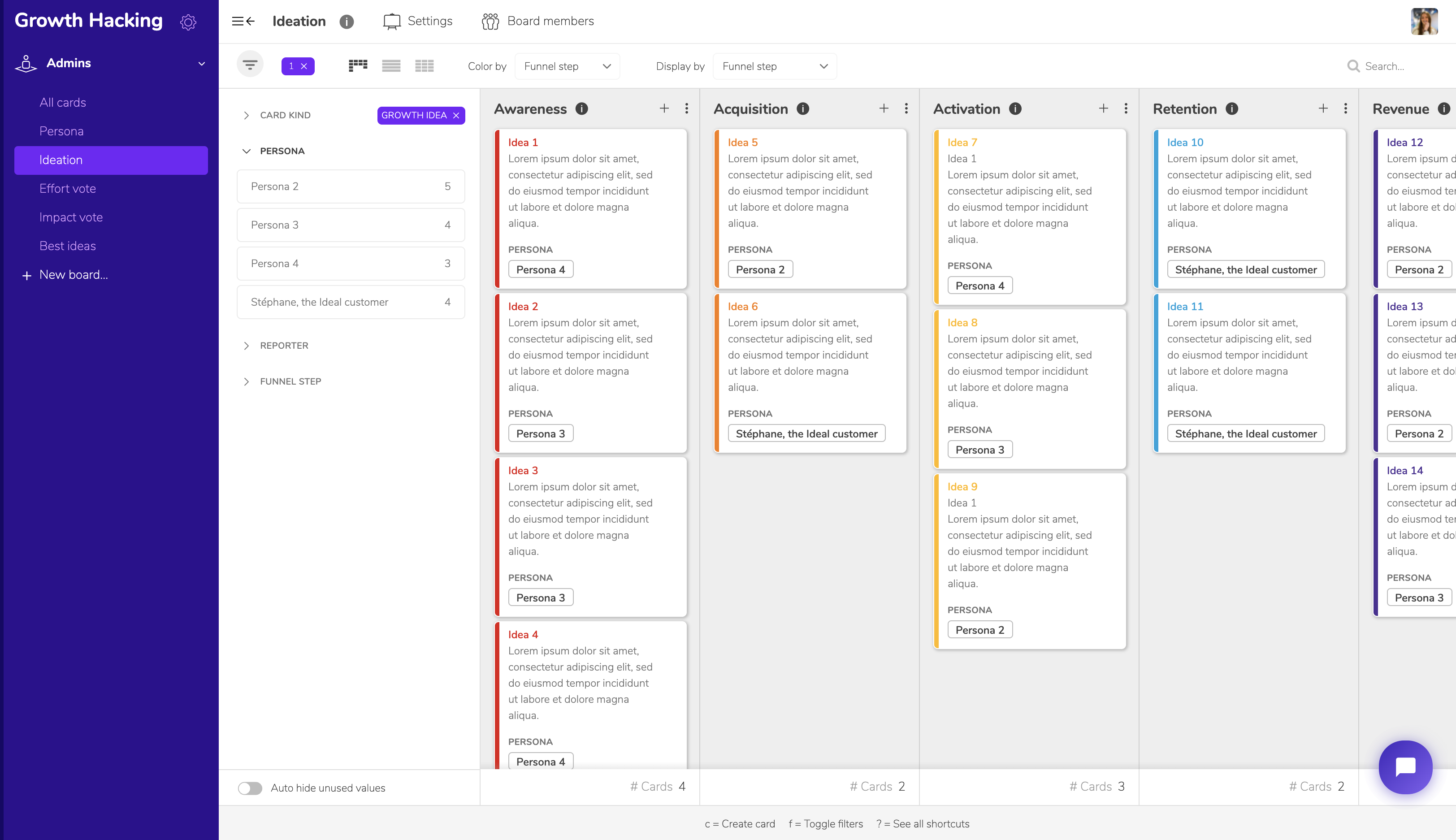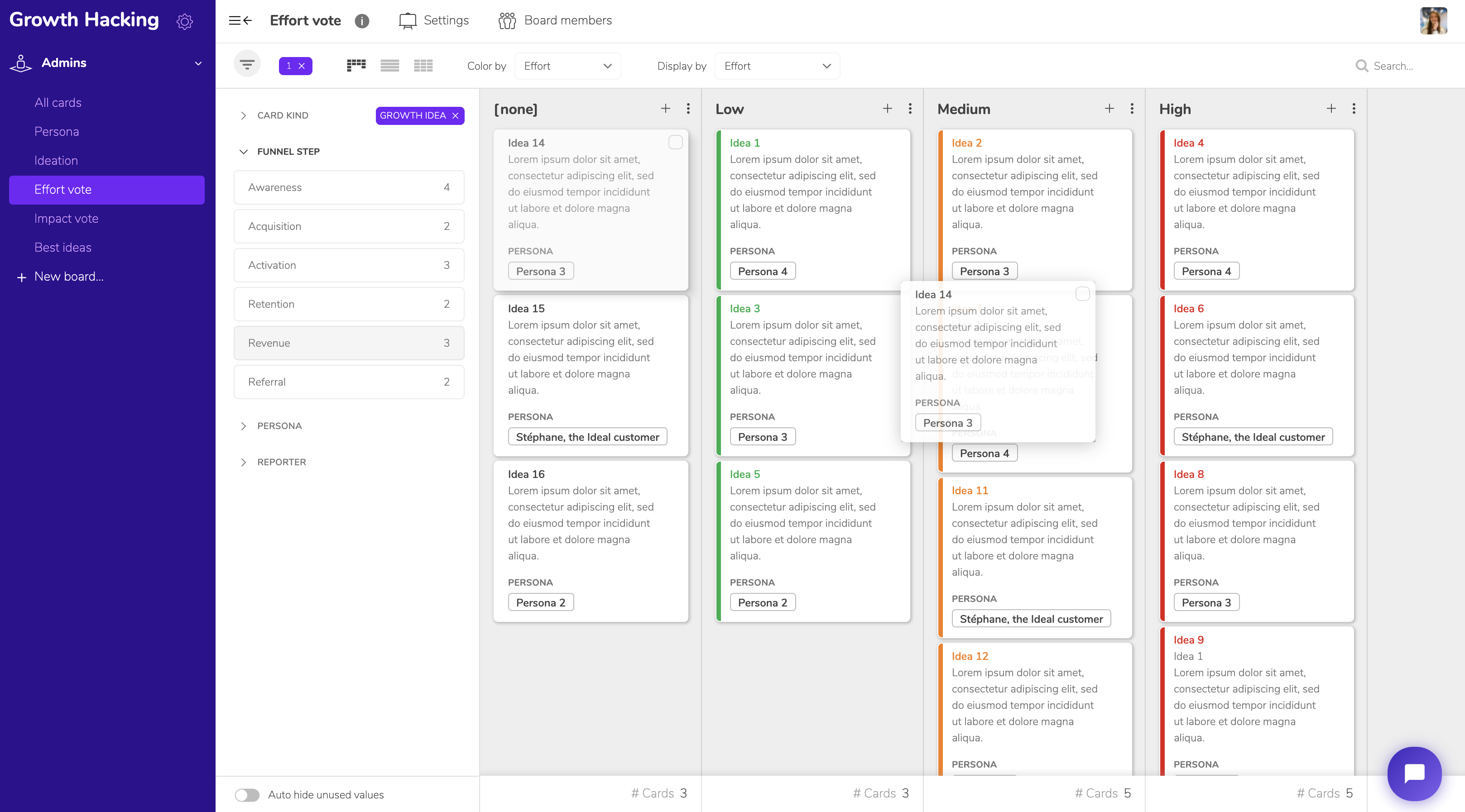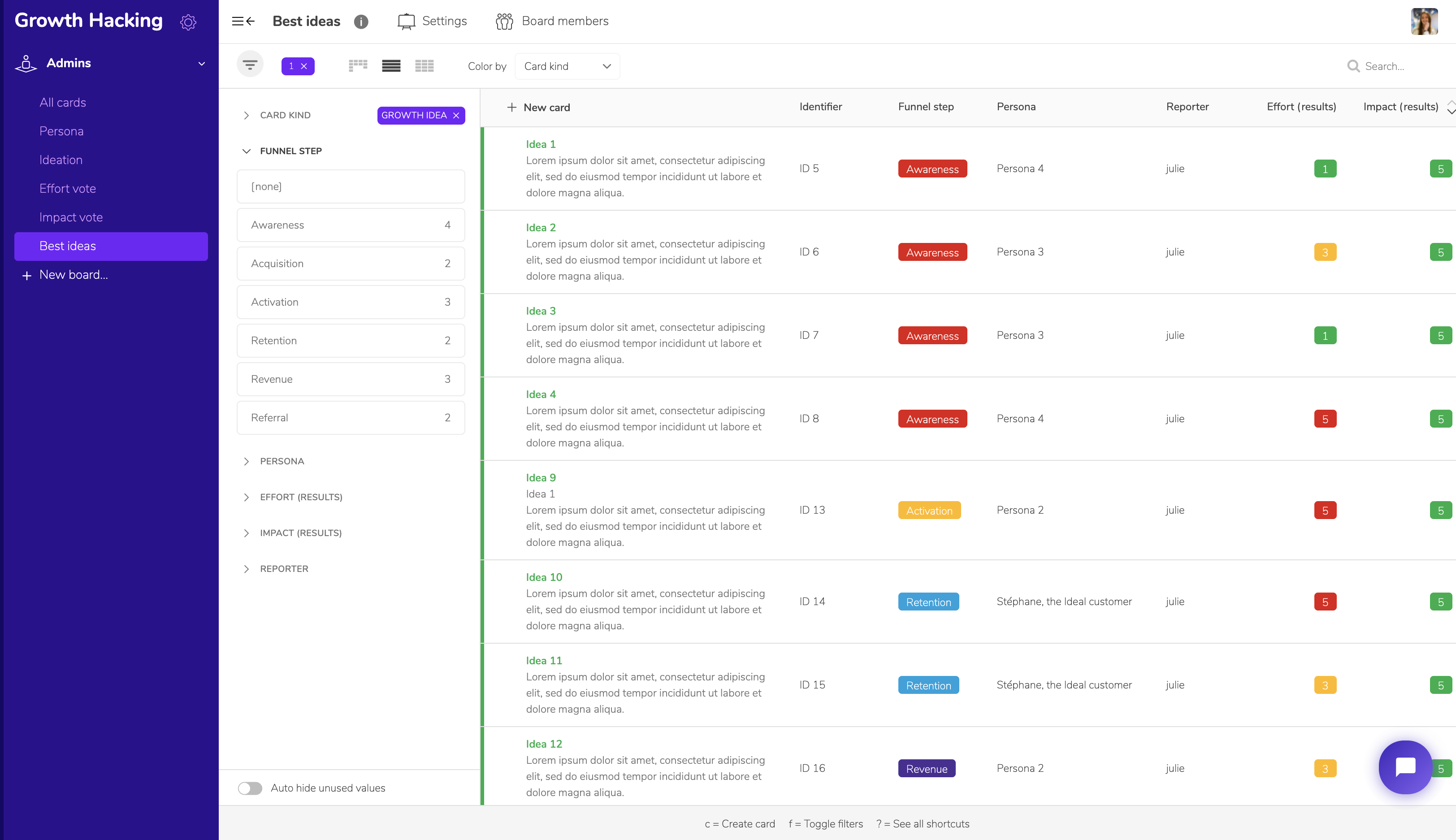What is Growth Hacking?
Discover the basic principles of Growth Hacking, the method that helps your product or service evolve in a scientific-creative way. Find out how to configure Growth Hacking in Klaro.
Growth hacking is project or company growth methodology which is in line with agile methodology on one hand, and lean startup methodology on the other:
-
From agile methods, growth hacking borrows the way of working in an autonomous interdisciplinary team, as well as the organization of work in iterative cycles of three to six weeks.
-
From lean startup, growth hacking borrows the scientific approach: not cryptic mathematical formulas, but rather the posing of hypotheses and creation of experiments to validate or invalidate these hypotheses.
Summary of the method
Let's quickly summarize the different elements required to set up growth hacking.
The pole star... and some other metrics
The method emphasizes the identification of the north star metric, which is an easily measurable quantity expressing growth over cycles. It can be, for instance, the number of users of a service or the recurring monthly income it generates.
A certain amount of reflection is required to identify a project-specific pole star metric which reflects healthy growth. Also note that the usual metrics are not ignored: acquisition rate and churn, number of visitors to a website, and so on, are all useful when considering the pole star metric.
An interdisciplinary team
A growth hacking team should include 4 to 8 people who between them have every skill required to design experiments in communication, marketing, sales, design, IT and so on.
The more autonomous the team, the more successful the project will be. It is obviously necessary to provide the team with a budget.
Getting creative with growth ideas
The principle of growth hacking is to be creative. The first thing to do is to identify ideal customers. Next we need to come up with ideas to attract, acquire and retain these customers.
Generally these ideas correspond to points along the sales funnel such as awareness, acquisition, activation, sales, loyalty and so on. They are based on the overall hypothesis that it is best to validate ideas with data before launching any expensive development.
Organization in successive sprints
At the start of each sprint, the team selects a number of experiments to launch in an effort to stimulate growth. The team then gets to work: improving the website, adding new features, launching a campaign, etc.
Each experiment must generate data and metrics that are followed and analysed to assess the impact of the experiment.
Iterative cycle
At the end of a cycle we take a step back and look at everything. What seems to work? What is less effective? This period of reflection naturally leads to decision-making at the start of the next cycle in regards which experiments to stop, which experiments to continue and which new experiments to start?
Using Klaro to manage your growth hacking
Each project and team is different and will of course have to adapt the above methodology. This is where Klaro comes into its own, since we are both inspired by the best of methods while dedicated to adapting your Klaro projects to your reality. In practice:
-
If you are just starting out, our Growth hacking template provides you with the ideal support for setting up a team workshop. Identify your ideal customers, brainstorm ideas along the sales funnel, assess together the impact and cost of each idea, and then launch your first sprint.
-
If your first growth hacking ideas are already clear, you can use our Kanban or Scrum board templates to eaasily organize your team's work in successive sprints.
These templates offer starting points but we fully appreciate that every team's requirements are different. Your Klaro project is adaptable to your reality; create it as you go.
Overview
Here is a short overview of how to use the Growth Hacking template:

The "ideation" phase facilitates brainstorming at every stage of the sales funnel as you develop a Growth Hacking strategy, from "Awareness" (how to get your product/service known?) to "Referral" (how and why a customer or user would recommend your product or service to a third party?). You can of course adapt the proposed steps to your needs.

Klaro allows your team members to vote on the details for each idea, for example as you all assess the effort required for the implementation of an idea or the impact of the idea on your project's growth. Just drag and drop cards to the "Low", "Medium" or "High" columns.

When the whole team has voted, the "Results" table gives you a clear overview of your Growth Hacking strategy. It shows you where to start by implementing ideas with the biggest impact and the least effort.
Need a hand? Our chatbot is always available and our experts are ready to help you, as you learn to use Klaro as well as for your Growth Hacking!
Happy Hacking and see you soon.
Learn more
Growth Hacking is a methodology that first appeared in the United States in 2010 and has since been implemented in a number of Silicon Valley startups, for instance at Dropbox. If you want to pursue Growth Hacking further, we recommend the following resources:
-
The founding book "Hacking Growth: How Today's Fastest-Growing Companies Drive Breakout Success" by Sean Ellis and Morgan Brown.
-
The https://growthhackers.com/ website, set up by the same authors and teeming with additional resources.
